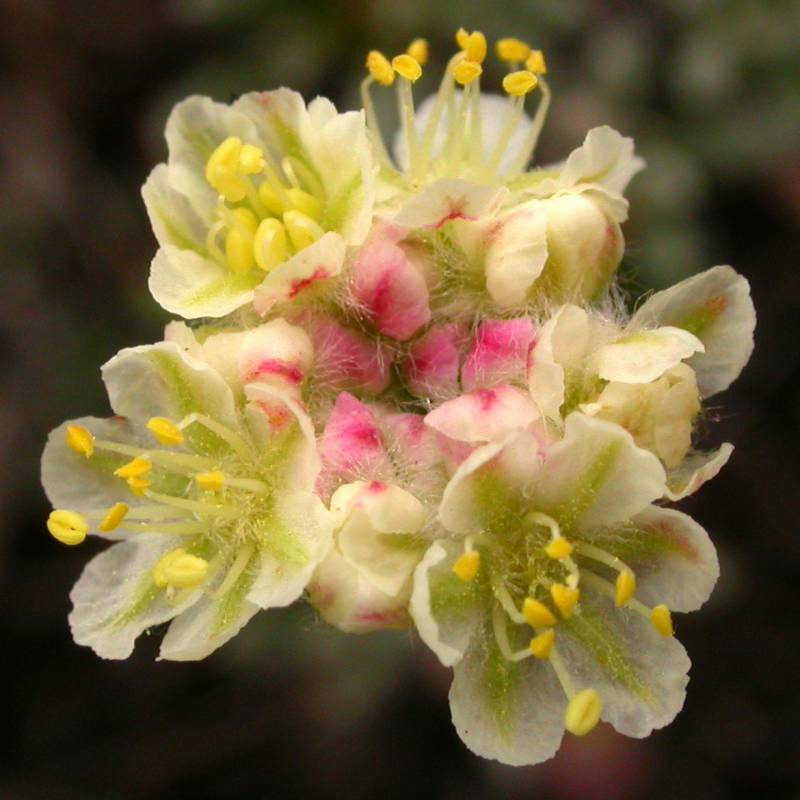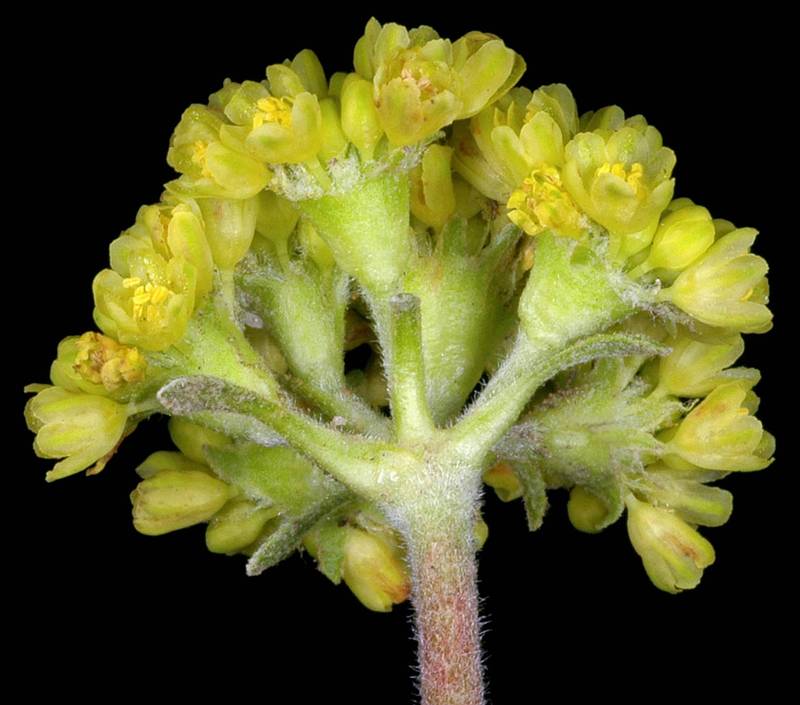Eriogonum thymoides
Eriogonum marifolium
thyme buckwheat, thyme-leaf wild buckwheat
marum-leaf wild buckwheat, mountain buckwheat
Leaves many, linear to linear-spatulate, 3-10 mm. long, usually revolute, somewhat wooly beneath and silky above.
Leaves alternate, numerous, 2-4 cm. long, the blade rhombic to obovate-oblanceolate, grayish-woolly beneath, tapered to a slender petiole.
Flowering stems 3-8 cm. tall, always with a whorl of leaves about mid-length;
involucres single and terminal, top-shaped, 3-5 mm. long, the teeth 6-8, erect, triangular, 1 mm. long;
perianth with a stipitate base 0.5-1 mm. long, densely hairy, the 6 segments obovate, yellow or white to rose-red, 4-6 mm. long; plants dioecious, the staminate flowers with 9 stamens, the filaments hairs only at the base, the pistillate flowers with stout, spreading styles 0.5-1 mm. long.
Inflorescence a 3- to 7-rayed umbel, from subcapitate to 5 cm. broad, subtended by a whorl of 3-7 linear-lanceolate bracts;
involucres broadly top-shaped, woolly, 3 mm. long, the 5 teeth 0.5 mm. long;
perianth pale to deep yellow, glabrous, 3 mm. long, with a stipitate base 0.5 mm. long;
filaments bearded on the lower half.
Achenes pubescent above
Achene exceeding the perianth.



